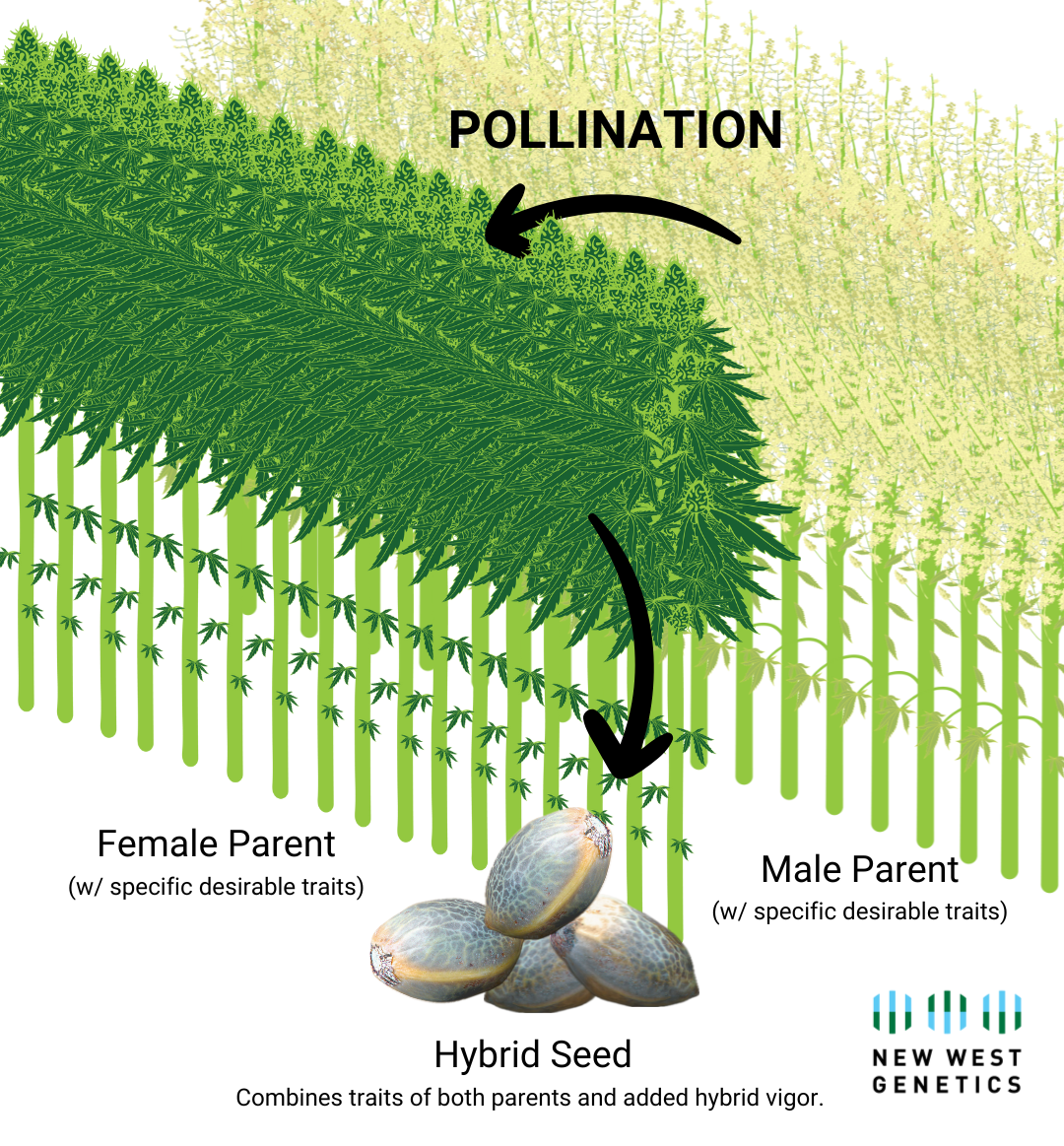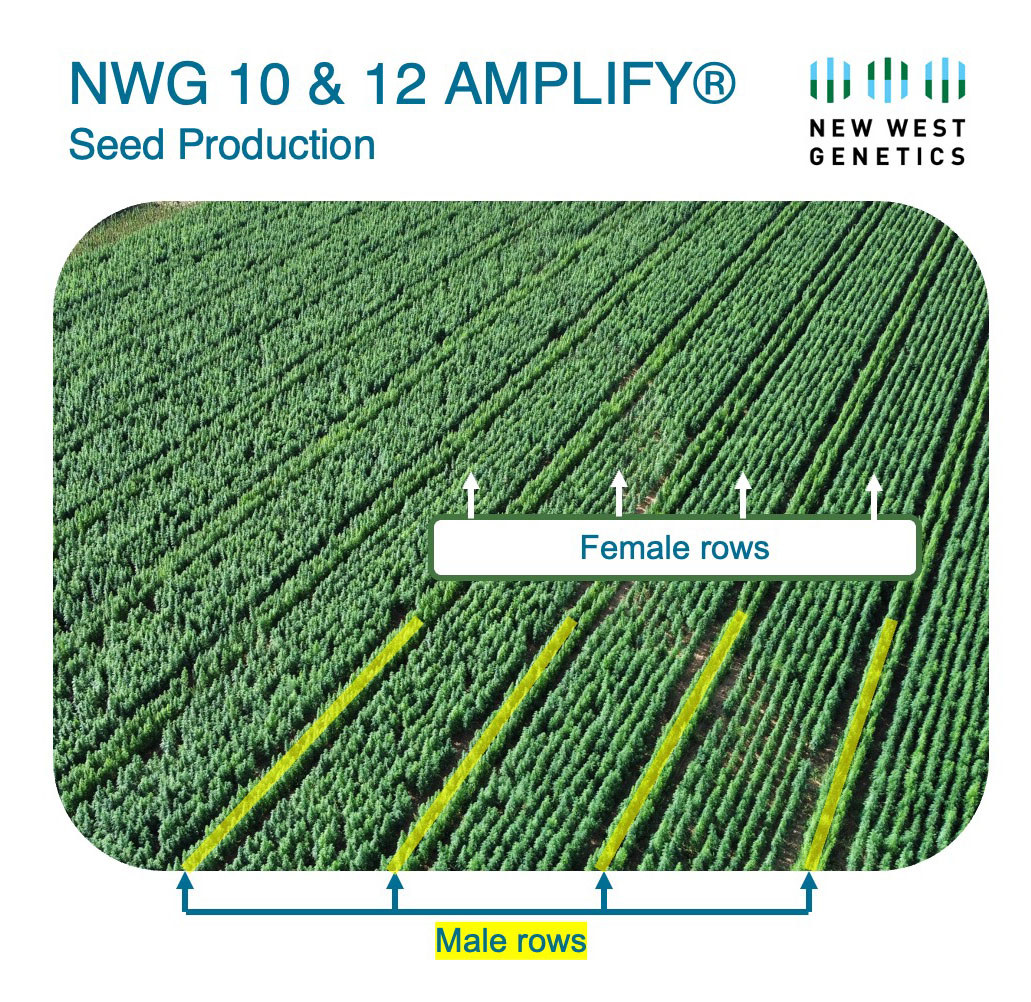As discussed, hybrid hemp is the F1 (first generation) seed harvested from a cross between two genetically distinct varieties. The key to successfully commercializing hybrids is to develop a method to scale seed production. A critical element of high-quality hybrid seed is using inbred parent lines in these crosses. Several different breeding approaches are used to create inbred lines and will be discussed in a future blog focused on how hemp hybrids and varieties are bred and selected.
Scaled hybrid seed production has been accomplished using several approaches in other crops. Corn (maize), for instance, uses a method where tassels (the source of pollen on a corn plant) are removed from the variety being used as the female parent in the cross. This leaves only the pollen from the intended male parent available to sire seed on the female plants. In contrast to the mechanical removal of pollen anatomy used in corn, crops such as canola and sunflower have developed genetic systems to remove pollen-bearing tissues (e.g. cytoplasmic male sterility).
The planting design for most hybrid crop production consists of alternating bays of male and female genotypes. Typically, the male is planted at a lower ratio than the female and at a rate that ensures adequate pollen availability while still maximizing the number of female plants. The goal is always to maximize hybrid seed yield and quality. The ratio of male: female in the field is species-dependent but is typically around 1:4.

Thus far, hybrid hemp and cannabis have not followed norms observed in other hybrid crops. Breeders have typically used clonally propagated genotypes as parent lines which are notoriously heterozygous (i.e. NOT inbred). The resulting “hybrids” have low genetic uniformity which leads to low field uniformity. Lack of uniformity among traits such as height, flowering time, and seed maturity creates obvious challenges for successful field-scale crop production.
Additionally, to skew the number of female plants, hybrid cannabis and most hemp production for cannabinoids has relied on the application of silver salts to induce hermaphrodietey and pollen production. (Pollen derived from chemically treated female plants carries an X chromosome, thus all seed created from such pollen results in female plants.) The application of silver salts must be done several times during seed production and is costly. A genetic solution is a much more cost-efficient and scalable system.
In summary, New West Genetics AMPLIFY® hybrids are created using the same standards and approaches employed in traditional hybrid crops like corn, canola, and sorghum. We developed proprietary systems for creating inbred lines with favorable agronomic traits, and we have bred genetics to skew the gender ratio in favor of females. This allows us to create genotypes that are 100% female to be used as the pollen recipient during seed production (akin to detasseling in corn). The male used for the hybrid seed production transmits the trait that skews the gender in the resulting F1 seed.
These methods allow us to produce hybrid hemp seed efficiently while adhering to high-quality standards for seed Certification. The results are a seed you can count on- NWG AMPLIFY hybrids; superior yielding and performing genetics to serve today’s markets.
